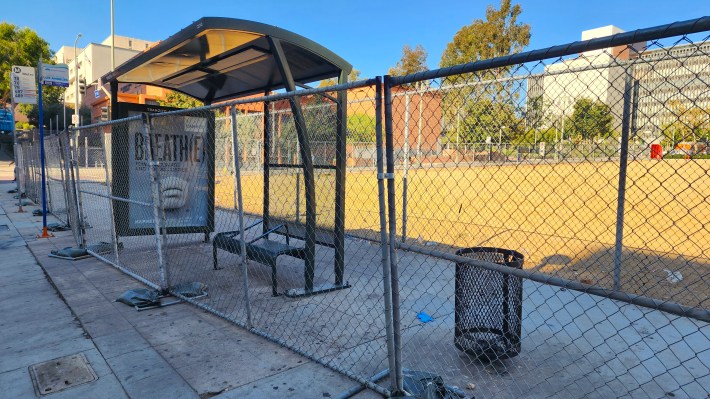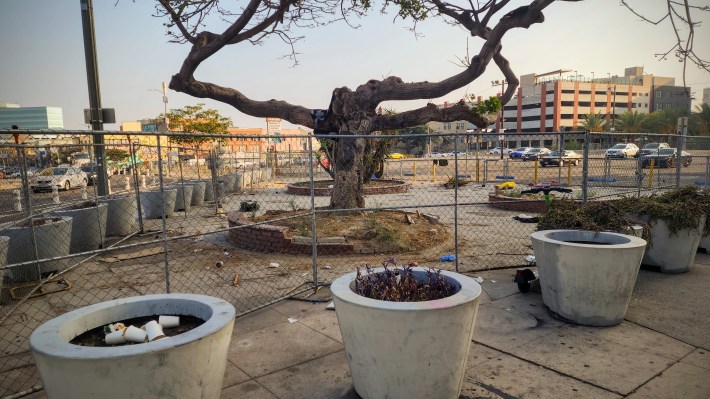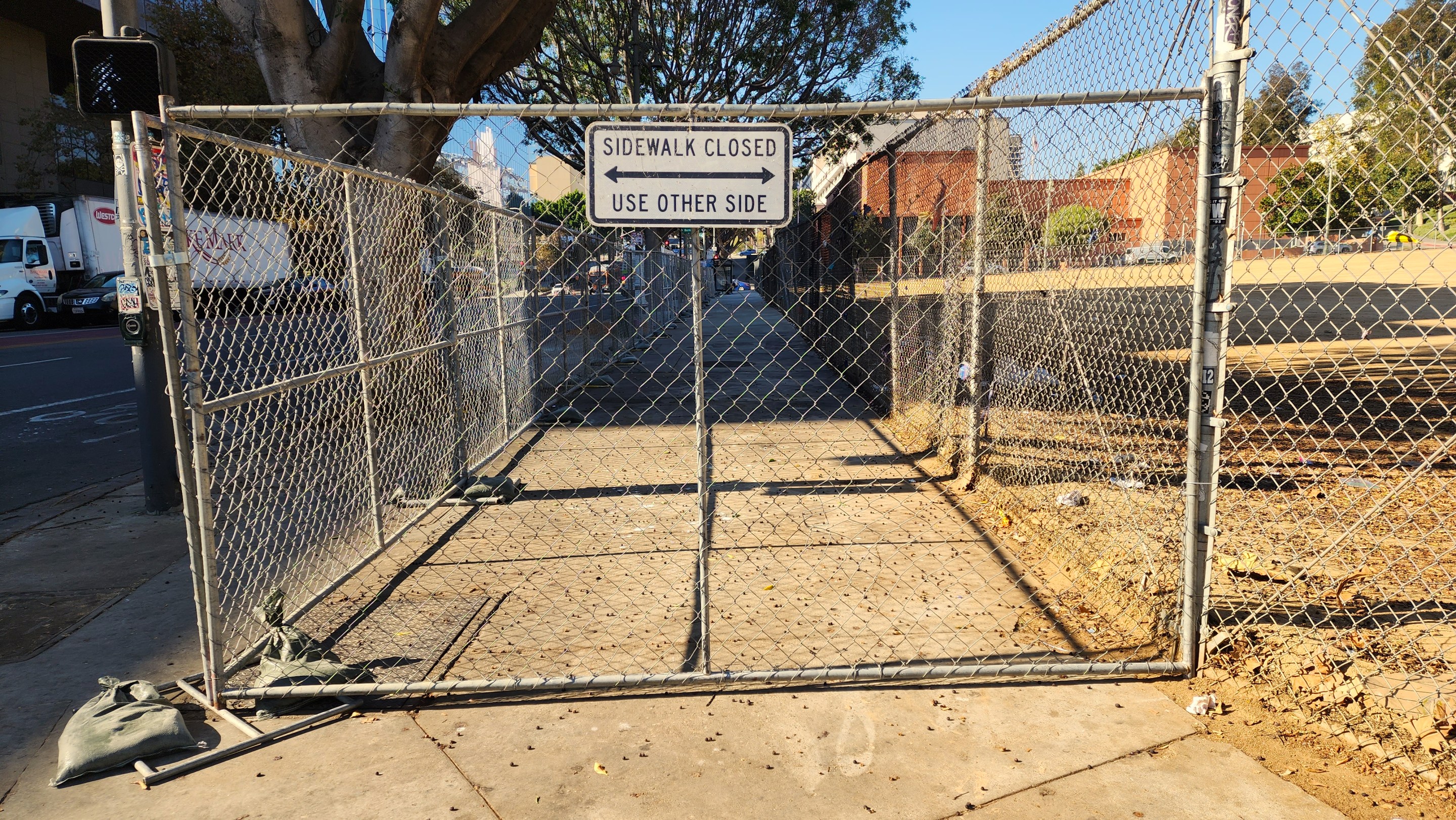After city officials clear homeless encampments, how do they prevent people from coming back?
In recent years, authorities and private entities have increasingly relied on fences, planters, giant rocks, and other forms of so-called “hostile architecture” to physically prevent unhoused people from being able to pitch a tent on a sidewalk.
Just last week, on November 13, a block-long fence was erected along 1st Street, just steps away from City Hall in DTLA, shortly after a group of unhoused people were cleared from the area during a city sanitation operation.
The fence blocks off a Metro bus shelter (one of only about a quarter that provides shade) and limits the amount of space people have to get on and off buses.
In other areas, it leaves only a few feet of space for people to navigate the sidewalk, forcing people to walk over uneven dirt and dense roots popping out of the ground.
When asked if they knew of the fence, Zach Seidl, Los Angeles Mayor Karen Bass's spokesperson, responded via text message, “Ya.”
After several follow-up messages sent over the course of four days, Seidl confirmed with L.A. TACO that “the city put the fence up after an Inside Safe operation.”
Seidl added that “there are improvements being made in the area,” without specifying what those improvements would entail. And he declined to elaborate when asked.
A week after the chain link fence went up, on November 19, an inspector with the city's Bureau of Street Services Investigation and Enforcement Division posted a “notice of violation” on the fence, announcing that the barrier was obstructing the sidewalk without being permitted.
“Observed protective fence obstructing sidewalk not removed,” the inspector wrote in the comments section of the notice.
When presented with the notice of violation, Seidl responded: “I'll look into it.”
A spokesperson for the Department of Public Works similarly told us, “We are looking into it, thank you!,” when we asked about the fence.
As of this publication, L.A. TACO has not heard back from Seidl or the Department of Public Works spokesperson.

The city now finds itself in an embarrassing situation where one city department is using taxpayer dollars to erect a fence that limits people’s access to public space, while another city department uses up even more city resources to have that same fence taken down.
This is not the first time that planters or fences have been moved onto sidewalks after Inside Safe operations.
In Hollywood, on El Centro Avenue near Hollywood Boulevard, giant brown planters were installed shortly after people were moved off the sidewalk through an Inside Safe operation in August 2023.
A few weeks earlier, planters similarly appeared on Selma Avenue in Hollywood, after a sprawling encampment next to a charter school was cleared.
At the time, Seidl denied that the mayor’s office was involved in installing the planters.
“The answer I got back after asking around is ‘no,’” Seidl said when asked if the mayor’s office had a hand in installing the planters on El Centro Avenue.
In Council District 14, which includes most of Downtown, anti-homeless fences have become a common fixture.

In February 2023, Councilmember Kevin de León dubbed the intersection of 3rd and Main Streets "fentanyl corner," and city workers cleared an encampment from the area before it was fenced off. Pete Brown, a spokesperson for De Leon, told L.A. TACO at the time that it was cleared for a "beautification project." Today the corner is littered with trash and remains fenced off.
A year prior, Toriumi Plaza in Little Tokyo was similarly cleared and remains fenced off.
And throughout Skid Row and parts of downtown's Historic Core there are blocks and blocks of chain link fence on city sidewalks.
If anyone else installed these fences without permits, they could be fined or possibly face misdemeanor charges. But when you run the city, the law doesn't always apply to you.







